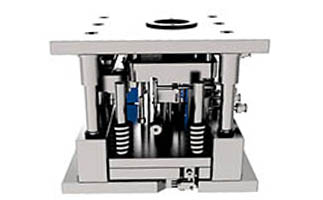Injection mold processing ideas, plastic mold design principles

Injection mold processing layout
1、 Questions to be considered in injection mold processing:
1. know the movement of the plastic melt, think about the resistance and speed of the plastic movement in the channel and cavity, and verify the maximum movement length. According to the movement direction of the plastic in the mold (i.e. the filling order), think about the question of the plastic melting from the beginning in the mold and the original air in the cavity
2. think about plastic shortening and feeding during cooling
3. control the crystallization, orientation and internal stress of the plastic in the mold through mold planning
4. selection of parting surface at pouring point
5. questions about the transverse parting, core pulling and ejection of the parts
6. cooling or heating of injection mold processing
7. the relationship between the relevant dimensions of injection mold processing and the injection machine used, including the maximum injection volume of the injection machine, the clamping force, and the dimensions of some parts of the mold
8. the overall layout and part shape of the injection mold processing should be simple and reasonable, and the mold should have appropriate accuracy, smoothness, strength and stiffness, which is easy to manufacture and install
2、 Typical layout of injection mold processing
1. formed parts
The cavity is directly molded, and some plastic parts are usually composed of male mold core and female mold core
2. pouring system
The flow path of plastic from the nozzle of the less jet machine to the cavity is called the pouring system, which is composed of dry flow path, shunt path, gate and cold well
3. some guidance
In order to ensure the accurate alignment of the moving die and the fixed die when closing the die, guide parts are usually set. They are: guide post (GP), positioning block, ejector guide post (EGP), etc
4. parting core pulling organization
Before being ejected, the plastic parts with outer concave or side hole must be laterally parting before they can be smoothly demoulded. The common organizations are: sliding block (including core pulling sliding block of mother mold, blasting sliding block of mother mold), inclined pin, etc
5. ejection equipment
In the process of injection mold processing and opening, the equipment for ejecting plastic parts from the mold. The common organizations are: ejector pin, ejector tube, ejector block, oblique pin, etc
6. cooling and heating system
In order to meet the requirements of injection technology for mold temperature, the mold is equipped with a cooling or heating system. Usually, a cooling channel is set in the mold to heat or oil substances
7. injection mold processing exhaust system
In order to exhaust the original air in the mold cavity during the injection process, an exhaust slot is often set up at the parting surface, but sometimes the exhaust volume of small plastic parts is not large, so the parting surface can be directly used for exhaust. The exhaust effect can be achieved by the cooperation gap between the ejector rod or insert of many molds and the mold (see figure 8/9)
8. support column
For large or large molds, support columns are added to avoid deformation of the male formwork. Generally, the support columns are required to be 0.10~~0.15mm higher than the mold foot to compensate for the compression deformation of the support column itself
9. return organization
In order to make the upper and lower ejection plates return to the position, a return organization is set
In addition to the return pin (RP), there are also forcibly pulled back organizations, emergency return organizations
(1) Usually, RP is equipped with tension spring (see figure \\). The effect of installing this tension spring is to quickly return the upper and lower ejector plates under the effect of tension spring
The specification of tension spring usually selects light and small load or light and heavy load
(2) Sometimes, when the oblique pin is broken or the thimble is broken, the tension spring is added at the bottom of the return pin. The intention is to maintain the thimble or oblique pin. Maybe the thimble and oblique pin collide with the master mold surface (see Figure 2). The selection type is usually medium load or heavy load
(3) When there is no inclined pin organization in the mold layout, the ejector plate is usually added to install the forcibly pulled back organization to avoid the poor movement of the inclined pin. For large molds, the pull back organization must be added (see Fig. \
(4) When there is a thimble under the slider organization of the mold, the quick return organization is added to maintain the thimble. The common quick return organization is shown in the figure
10. specification of mold base
(1) All our die bases are customized by outsourcing factories, so the demand for selection and specification of die bases is not very strict (usually, we choose fudeba standard mold base according to the specification)
(2) Composition of the second plate die base
Generally, the second plate formwork consists of the upper fixed plate, the lower fixed plate, the female template, the male template, the upper ejector plate and the lower ejector plate
Sometimes, the following two situations occur:
A when the parent template is thickened to add the strength of the parent template, the upper fixing plate is omitted
B when adding warm flow plate sometimes
